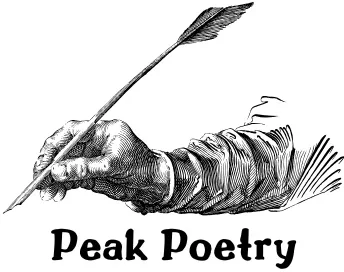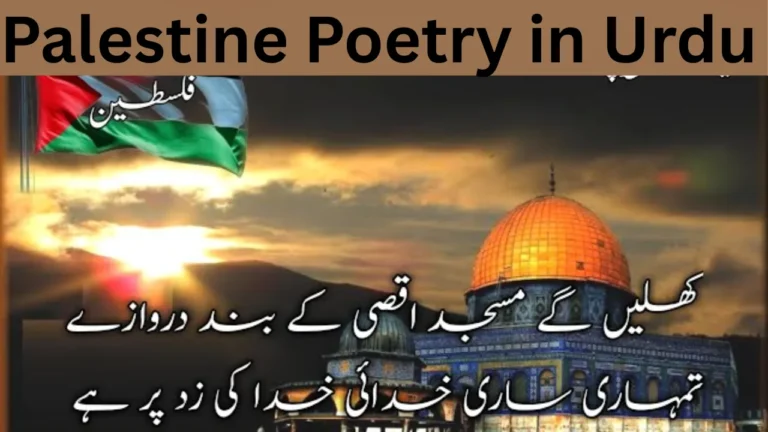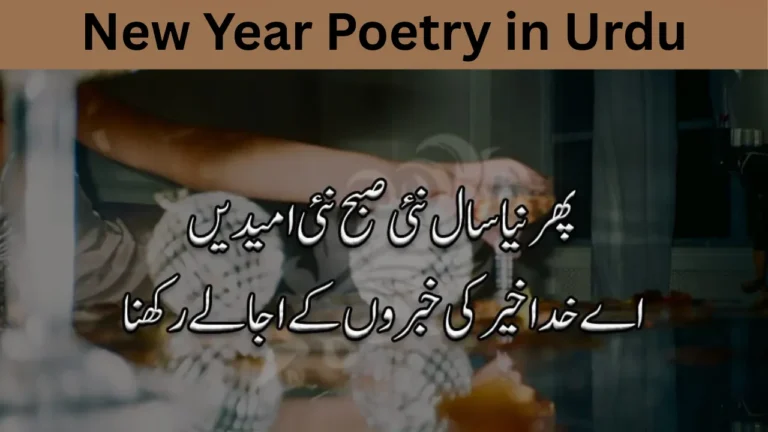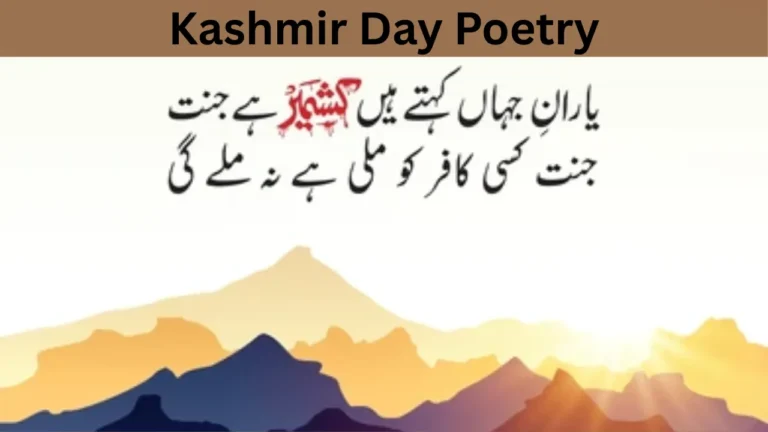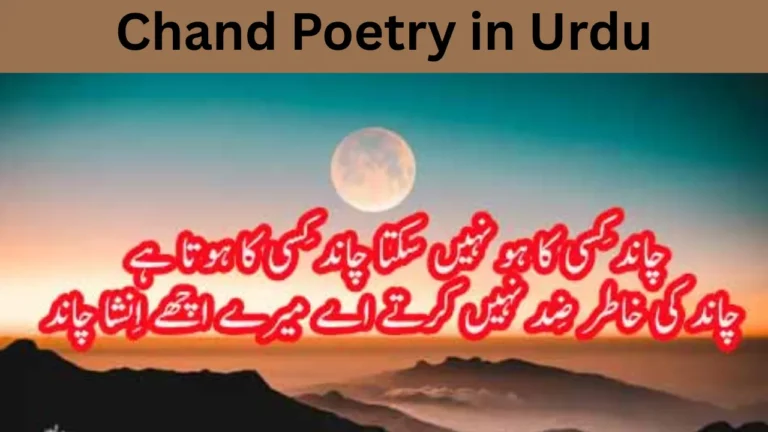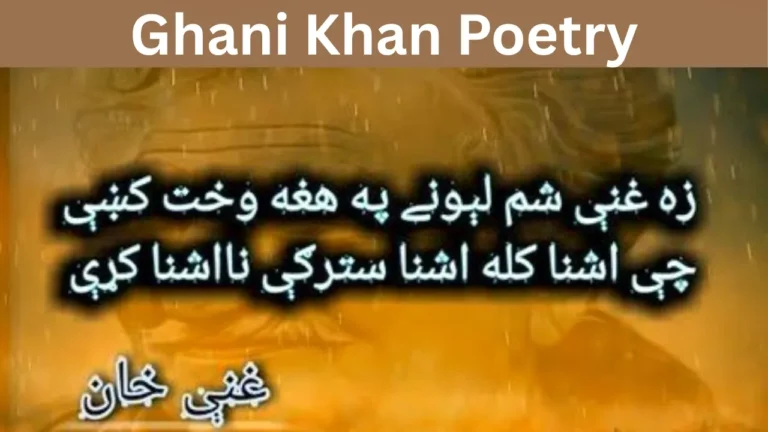Deep Poetry in Urdu: A Soulful Journey Through Words
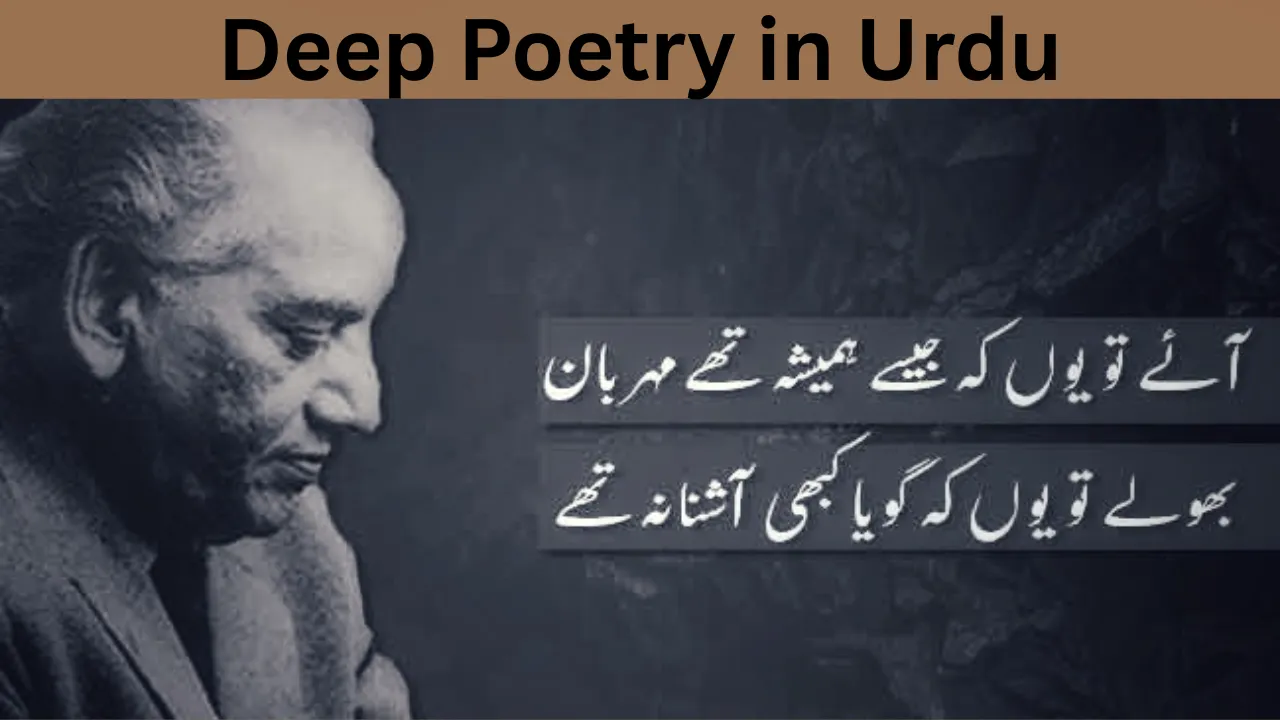
Deep poetry in Urdu holds a special place in the hearts of those who seek meaning beyond the ordinary. The beauty of this genre lies not only in its artistic expression but also in its ability to connect hearts, heal wounds, and stir emotions in the most profound way. Whether it’s love, pain, loss, or spiritual awakening, deep poetry speaks what words often fail to express.
Right at the beginning, we must mention that emotions like friendship and bonding are also beautifully captured in Bestie Poetry in Urdu: A Beautiful Bond in Words. This shows how even the strongest friendships find depth through poetic words.
Urdu, as a language, is naturally poetic and rich with metaphors. This makes it ideal for capturing complex emotions with simplicity. Deep shayari in Urdu has been written for centuries by poets who wanted to dive into human emotions and life’s philosophical depths.
Why Deep Poetry in Urdu Feels So Real
The power of deep poetry in Urdu lies in its simplicity and depth. With just two lines, a poet can open wounds, comfort a grieving heart, or inspire the lost.
Each word touches your heart, and each pause speaks louder than the lines themselves. The emotional connection is instant.
Here’s one such couplet that many relate to:
یادیں کبھی نہیں مرتیں، بس وقت کے پردے میں چھپ جاتی ہیں۔
وہ چہرہ اب بھی دل میں ہے، جو آنکھوں سے اوجھل ہو گیا۔
This verse speaks of loss, memory, and longing—three emotions that define human experience. Deep shayari in Urdu captures them all in the most graceful way.
The Themes That Shape Deep Urdu Poetry
There are several recurring themes in deep Urdu poetry. These themes are not just literary tools; they are the foundation of the emotional connection readers build with poetry.
From love and heartbreak to existential dread, Urdu poets have long explored the vastness of human emotions.
| Theme | Description |
|---|---|
| Love (محبت) | Expressing joy, longing, or heartbreak caused by love |
| Loss (جدائی) | Reflecting the absence of someone important |
| Hope (امید) | Inspiring verses in tough situations |
| Silence (خاموشی) | Expressing what words cannot say |
| Time (وقت) | Commenting on change, past, and future |
Here’s a line that beautifully captures the feeling of time and change:
وقت بدل جاتا ہے چہرے کے ساتھ،
پر کچھ یادیں صدیوں تک نہیں بھولتیں۔
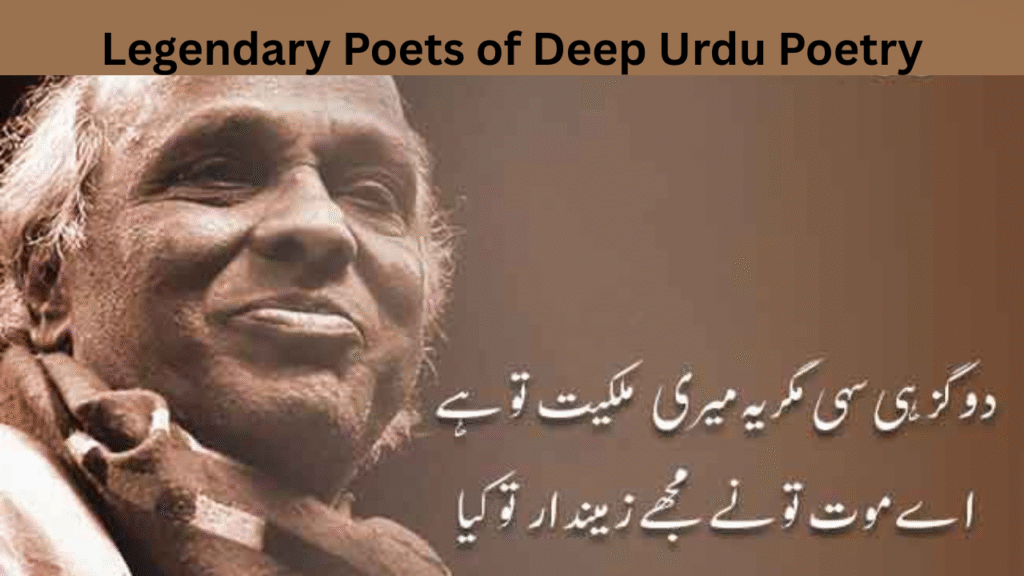
Legendary Poets of Deep Urdu Poetry
The richness of deep poetry in Urdu is incomplete without the giants who defined the genre. These poets didn’t just write—they poured their hearts into each word.
Mirza Ghalib wrote with mystery and depth, using metaphors that still remain unmatched.
Jaun Elia expressed pain with raw honesty.
Faiz Ahmed Faiz gave voice to sorrow and revolution.
Parveen Shakir painted emotions in delicate, feminine tones.
Allama Iqbal inspired generations with his thought-provoking and spiritual depth.
A few examples from their poetic genius include:
مرزا غالب:
ہزاروں خواہشیں ایسی کہ ہر خواہش پہ دم نکلے،
بہت نکلے میرے ارمان لیکن پھر بھی کم نکلے۔
جون ایلیا:
اب نہیں کوئی بات خطرے کی،
اب سبھی کو سبھی سے خطرہ ہے۔
These timeless poets gave deep poetry in Urdu its soul.
Why People Turn to Urdu Poetry in Pain
Pain has a language, and that language is often poetry. People who feel deeply often cannot express it openly, so they turn to deep shayari in Urdu to speak for them.
Whether it’s heartbreak, loneliness, or disappointment, poetry allows people to feel less alone. It connects souls.
Here’s one such painful verse:
تم نے وعدہ کیا تھا کہ بچھڑو گے نہیں،
پھر یہ کیسا سفر ہے جو تمہارے بغیر ہے؟
And another:
میرے دل کی ویرانی پر مت ہنسو،
یہاں کبھی کسی کا عشق آباد تھا۔
These verses are simple, but they carry the weight of the world for someone experiencing heartbreak.
Deep Poetry in Urdu in Today’s Digital Age
The digital age has brought new life to deep Urdu poetry. On Instagram, YouTube, and TikTok, you’ll find videos and posts filled with heartfelt poetry. Many young poets are gaining popularity by writing from the heart.
This new era allows poets to blend classical themes with modern struggles—like mental health, broken friendships, and lost dreams.
Here is a modern verse trending among youth:
زندگی کی کتاب میں ایک صفحہ ایسا بھی ہے،
جہاں سب کچھ لکھا ہے، مگر سمجھ کچھ نہیں آتا۔
Social media gives this emotional art form a new stage, where verses spread like wildfire because of their relatability.
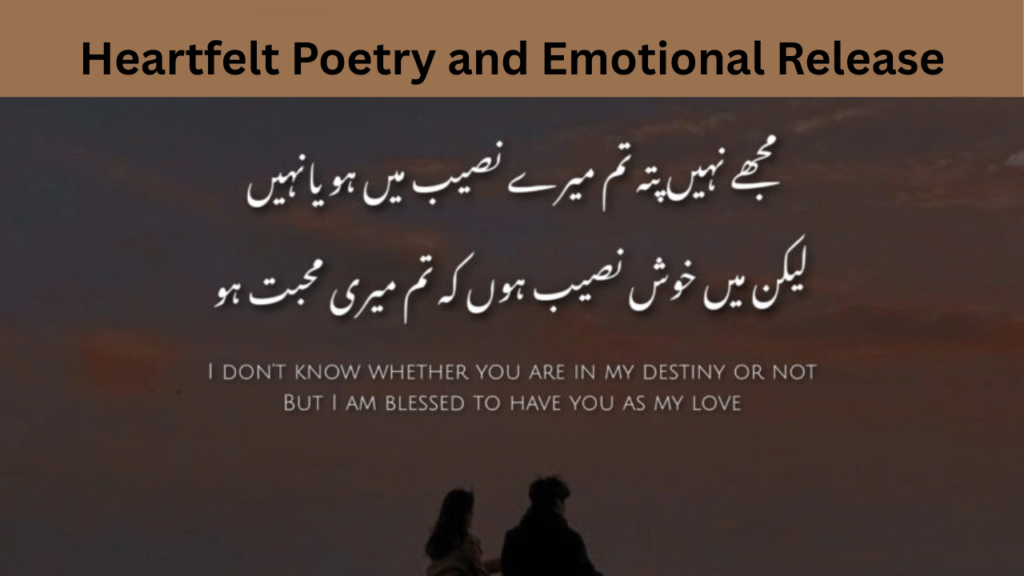
Heartfelt Poetry and Emotional Release
When your emotions feel trapped inside, reading or writing deep poetry in Urdu helps release them. That’s why poetry is not just art—it is therapy for many.
Here’s another tearful couplet:
دل کی خاموشیوں میں ایک شور ہے،
جو صرف وہی سنتا ہے جو ٹوٹا ہوا ہو۔
Sometimes two lines say what hundreds of words cannot. That is the strength of Urdu poetry—it gives your silence a voice.
And in a world full of distractions, such verses create pause and reflection.
Speaking of reflection, short poetry works in English too. Many readers find emotional relief in Heart Touching Poetry in English 2 Lines: Feelings in Few Words. These short verses, just like their Urdu counterparts, touch the heart instantly.
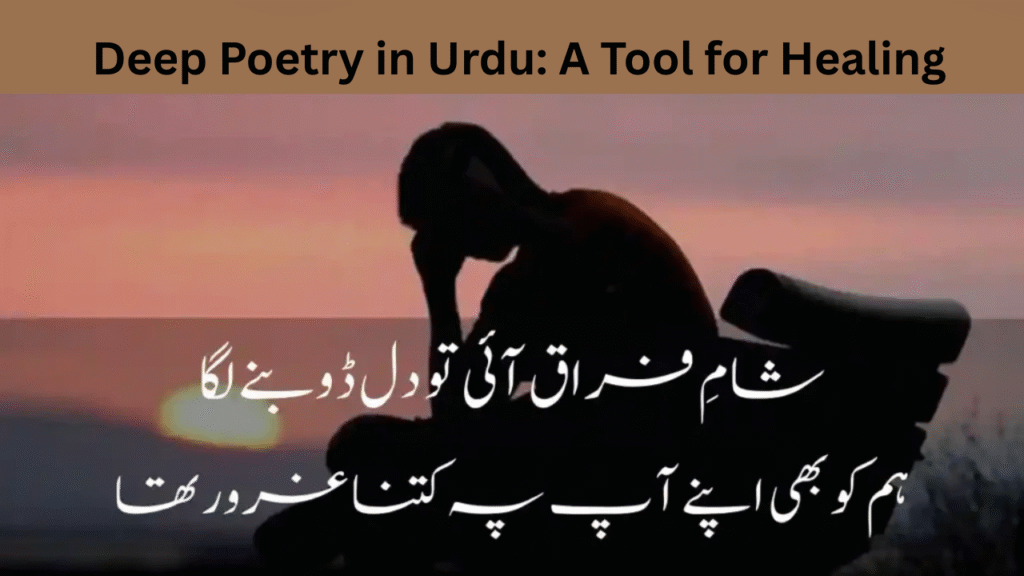
Deep Poetry in Urdu: A Tool for Healing
People going through depression, anxiety, or emotional loss often find comfort in deep shayari in Urdu. Mental health professionals even encourage journaling and poetry writing as a form of expression therapy.
Here are a few healing verses:
یہ وقت بھی گزر جائے گا، بس تھوڑا سا صبر چاہیے،
زندگی ہر درد کا علاج رکھتی ہے۔
And:
غم کو ہنسی میں چھپانا سیکھ لیا ہے،
اب کوئی دیکھ کر میری آنکھوں میں نمی نہیں پڑھتا۔
Such poetry becomes a companion during dark times. It reminds you that you’re not alone and that your pain is understood.
Using Deep Urdu Poetry in Daily Life
Today, people use deep poetry in Urdu in many creative ways:
- For WhatsApp statuses
- In wedding invitations
- During funerals
- On social media posts
- In personal diaries
Here’s a poetic verse used in many captions:
چپ رہ کر بھی سب کچھ کہہ دیا،
میری خاموشی میری فریاد بن گئی۔
Poetry adds beauty to emotions. It becomes a personal expression tool, carrying hidden meanings that only a few can understand.
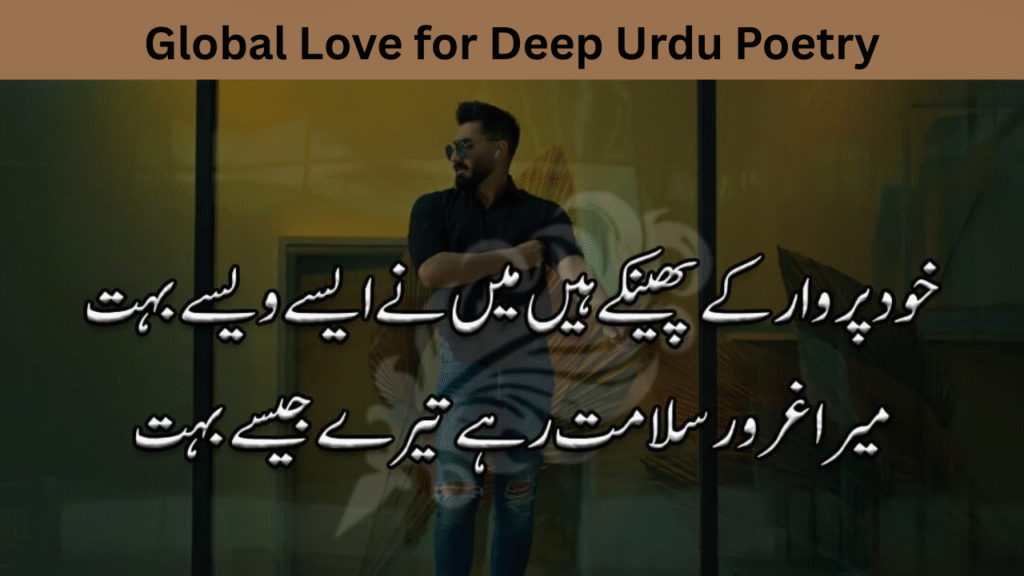
Global Love for Deep Urdu Poetry
Even those who don’t speak Urdu feel drawn to it when they hear it in ghazals, recitations, or videos. The emotional sound of the language carries enough power to move hearts.
Subtitled YouTube videos and translated poetry blogs have brought deep shayari in Urdu to a global audience.
Let’s end this section with a heartfelt verse:
جتنا چاہا، اتنا ملا نہیں،
یہ زندگی ہے، کوئی خواب نہیں۔
People from every culture can relate to the themes of love, loss, and hope—making this poetic art form truly universal.
Final Thoughts
Deep poetry in Urdu is not just literature—it is emotion, healing, identity, and expression. It’s the part of Urdu culture that brings together the beauty of words and the pain of reality.
Through legendary poets and modern voices, this tradition continues to grow. Whether you’re 15 or 50, a verse can change your mood, touch your heart, or help you heal.
Let’s end this soulful journey with one last verse:
لفظوں کا کھیل نہیں یہ شاعری،
یہ دل کی وہ بات ہے جو لبوں تک آ گئی۔
Let your heart speak. Let poetry guide you. In every tear, every smile, and every silence, there is poetry waiting to be written.
Deep poetry in Urdu is where your soul finds its language.
